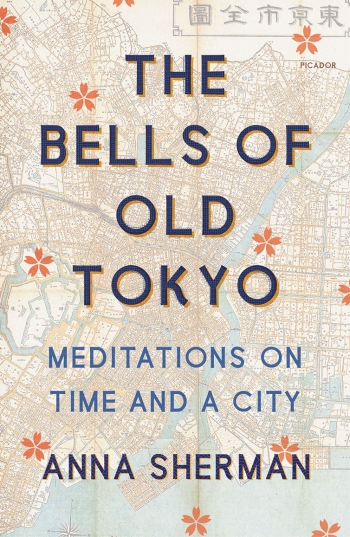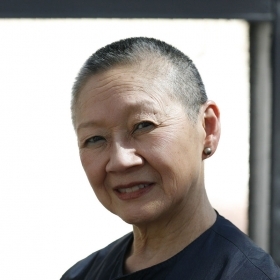A quick visit to Tokyo leaves an impression of speed, density, and efficiency. But years of wandering down its endless streets complicate this vision, offering a more heterogeneous version of place. For Anna Sherman ’92, a resident of Tokyo since 2001, the city can best be understood as a multifaceted timepiece where the digital jostles against the analog, as the bells of the global stock markets ring alongside the rituals of Shinto prayer bells.
In tracing the various ways that the Japanese measure time—through the burning of incense, the slow pour of a coffee, the arrival of the Yamanote railway line—The Bells of Old Tokyo, Sherman’s first book, centers on a vision of time as a subjective foundation of all experience. She creates a rich, culturally fluent text of episodic meditations that move forward and backward in time to ultimately offer wisdom not only about Japanese temporality but also the impact of the flow of time on human life.
Following in the footsteps of composer Yoshimura Hiroshi’s book Edo’s Bells of Time, Sherman works from the premise of a travelogue, venturing forth to look for the eight lost bells that once surrounded Tokyo and served to delineate its neighborhoods. What ultimately results is far more complex, as the book becomes a sort of spiritual and philosophical pilgrimage, one in which she locates residual moments of nonstandardized cultural time that linger in our contemporary digital age.
Moving between models of time bound to nature and its contemporary mechanic standardization, Sherman displays a talent for combining vast research with embodied experience, blending references to Japanese literature, art, and language with journalistic engagements with both experts and everyday people. She unfolds how the Japanese language offers numerous ways of expressing time, from words for stopwatches and races, to terms that mark instants and moments, seasons and periods, affluences of time and mere particles.
In conceptualizing time in a way that is not merely progressive, as it is in the West, but instead as more manifest, myriad, and complex, the Japanese, as Sherman learns in her journey, conceive of time as a creature, made metaphorical in the cyclical stories of the Zodiac, which gives rhythms to both time and space. Thus embodied, Sherman pursues time with a perspective that understands it cannot be fully domesticated or tamed. She tells of her unfolding comprehension as she moves around the ring of Tokyo’s circumference, interspersing slow moments in the intimacy of the now-shuttered but still-legendary Daibo Coffee shop with tales of various city places, experiences, and histories from the Tokugawa shogun prisons to the contemporary clubs of Roppongi. Science, art, and philosophy overlap in evocative ways. In investigating Hisashige Tanaka’s Myriad Year Clock, a masterpiece of Japanese clockmaking from the later Edo period that can show time in seven ways, Sherman reminds us that clocks are more than machines: As philosophies of time, they exceed the numbers they present.
Throughout The Bells of Old Tokyo, Sherman invokes a sense of space and place that is remarkable—alternately photographic, then poetic, scholarly, and human—and she is unafraid to document the occasional moment of cross-cultural incomprehension, or to detail the sense of fear that followed the 2011 earthquake and Fukushima Daiichi nuclear disaster.
For both the expert on Japan and the culturally curious, The Bells of Old Tokyo offers an evocative journey, one that illuminates how time, as an abstract category, can be translated into modes of production, methods of imperial rule, means of waging war, or patterns of grief.
Hinrichsen is an associate professor of English at the University of Arkansas.






We ask that those who engage in Wellesley magazine's online community act with honesty, integrity, and respect. (Remember the honor code, alums?) We reserve the right to remove comments by impersonators or comments that are not civil and relevant to the subject at hand. By posting here, you are permitting Wellesley magazine to edit and republish your comment in all media. Please remember that all posts are public.